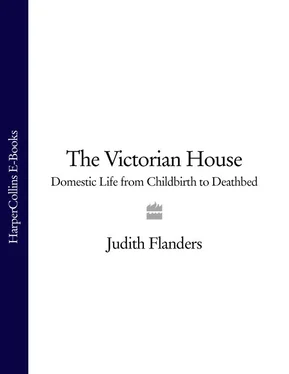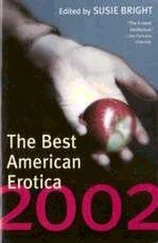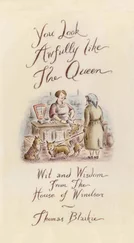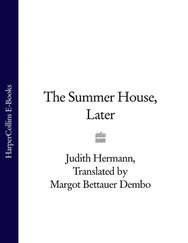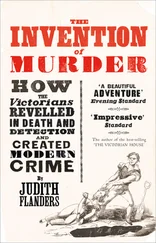These ideas were very much a part of the Zeitgeist. Linnaeus, the eighteenth-century Swedish naturalist, had been the first to propose a system for defining and classifying the animal kingdom by genera and species within an ordered hierarchy, and when his collection was brought to London to form the basis of the Linnean Society in the 1790s, it promoted and upheld the single, static classification system, which was popular by virtue of its clarity and simplicity.
The sheer amount of new information available – new inventions firing the Industrial Revolution, new flora and fauna brought back in the age of Imperial expansion – fed an urge to numerate, to classify. The Register of Births, Marriages and Deaths, set up in 1837, was an approach to classifying the population at three major points in their lifespan. The census was instituted in the first attempt to number the population of the British Isles. Much of the classification followed the hierarchical patterns set down by Linnaeus. The British Museum (now the British Library) began to create its massive catalogue; the Great Exhibition of 1851 graded and classified all production into four categories (‘raw materials’, ‘machinery and mechanical inventions’, ‘manufacture’ and ‘sculpture and fine arts’); Peter Roget, a physiologist, separated and categorized the entire English language into five classes (‘abstract relations’, ‘space’, ‘matter’, ‘intellect’, ‘volition’ and ‘emotion, religion and morality’) in his Thesaurus of English Words and Phrases (1852). *
Yet the notion of the natural world following a relentless progressive law, of historical progress moving in a linear fashion towards a single future goal, was becoming popular in tandem with this urge to describe what was present in the here and now. The Oxford English Dictionary , conceived in 1857, was the first dictionary that was not a guide to current usage (or not only a guide to current usage), but instead a chronological ordering of the historical development of the language, a completely new approach. Darwin’s On the Origin of Species (1859) had two themes, progress (evolution) and competition (natural selection). Evolution was generally accepted in a very short time for such a radical thesis; for evolution could be interpreted as progress. Natural selection was at odds with historical progress: it was arbitrary, unclassifiable, and it therefore had to wait until the twentieth century for its turn. Even something as seemingly straightforward and non-scientific as how to display paintings was radically altered by this linear notion: Charles Eastlake rehung the pictures in the National Gallery to take account of school and chronology for the first time.
Women’s preoccupations were not neglected in this urge to classify: Eliza Acton, in her cookery books at the beginning of the century, was the first person to write a recipe more or less as we would recognize it today, by separating out the ingredients from the method, which no one had thought of doing before. No longer was a cook told to take ‘some flour’ or ‘enough milk’, but now quantities and measures were introduced. Department stores were seen as the epitome of this classificatory ideal: Whiteley’s, in Westbourne Grove – one of the earliest department stores, and the biggest – was, said the Paddington Times , ‘the realisation of organisation and order’. 46
The expectation was that such organization could (and should) be replicated at home: Houlston’s Industrial Library, which offered would-be servants advice on how to ready themselves for new and better jobs in service, suggested that ladies’ maids keep inventories of all their mistress’s clothes, checking them every few weeks against the clothes and updating them accordingly. 47 New householders were advised to make an inventory of their entire household: furniture, furnishings, ornaments, pictures. * Then ‘once a year … the mistress should overlook every single possession she has, comparing them with a list made at the time she entered the house, which she should never let out of her own possession, and which she should alter from time to time, as things are broken or lost or bought’. This must include ‘every glass, tumbler, cup, saucer’. The maid and her employer should go through the list together, after which they should both sign and date it, so that no questions might later occur. 49
Supervision extended to every aspect of the relationship between mistress and servant. The usual system, for a woman with one or more servants, was that in the morning the mistress would perform her household functions of overseeing the running of her house: checking that the rooms had been cleaned properly, if there were enough servants, or cleaning the house with her servant if she had only one. Then she would go to the kitchen, to look at the food left from the day (or days) before, and plan and order her meals accordingly. She also gave out stores from the locked storeroom. Some gave out stores once a week, but the paragon found in the advice books was to do it every day, based on the servant’s requirements for that day alone.
The English Housekeeper acknowledged that few houses had storerooms that could meet the requirements of the ideal promoted in advice books, and then went on to outline them anyway: shelves for preserves and pickles, drawers for cleaning cloths, boxes for candles and soap. The price of starch varied with the price of flour, so the canny housekeeper stocked up when prices dropped. Rice could be stored for ‘more than three years, by spreading a well-aired linen sheet in a box, and folding it over the rice, the sheet being lifted out on the floor, once in two or three months, and the rice spread about upon the sheet for a day or two’. If the space was available, dried goods were to be bought only twice or three times a year. 50 When possible, shopping was to be done seasonally, when things were cheapest: towards the end of the century coals cost about 15s. a ton in summer; £1 1s. a ton in winter. A 112 lb sack of potatoes cost about 6s. and lasted four or five people three months – an outlay of about 6d. a week. If a smaller quantity was bought, or the potatoes were bought out of season, it might cost 1s. a week to feed the same number of people. 51
Weekly stores to be handed out to the cook included ‘Baked flour, prepared crumbs of bread, garlic, shallots, onions, black onions, burnt sugar, stock, glaze, salt, mustard, pepper, cayenne, all kinds of spice, dried herbs, vinegar, oil, string, pudding-cloths [one for every pudding ordered that week], paper for roasting, paper for fried fish, etc; fish napkins, plenty of clean towels, oatmeal, groats, flour, split peas … lard, butter, eggs, etc, etc.’ 52 The cook also needed every week a dishing-up cloth, a dresser cloth, a tablecloth, six kitchen cloths, a dish cloth, a knife cloth, a floor cloth, a rubber (to clean linoleum), three dusters and a flannel. 53 Good housewives did not give these things out promiscuously: Mrs Haweis expected her model women to inspect each old duster to ensure it was sufficiently worn out before exchanging it for a new one. 54
The handing out always caused problems: many servants were insulted by the implication that they were not responsible enough, or honest enough, to be allowed to take what they needed when they needed it. Gwen Raverat’s mother had the same cook for thirty years, but to the end the cook ‘had to go through the farce of asking for every pot of jam or box of matches to be given out of the store cupboard, for she herself was never allowed to hold the key for a single instant’. 55 The system mortified Hannah Cullwick. After more than two years working for a widow and her daughter in north London, she said bitterly, ‘Every little thing I’ve to ax for & I carina always remember at the time what I may want to use, & so it’s inconvenient – besides I think it shows so little trust & treating a servant like a child.’ 56 (The equation of servants with children will be discussed in the next chapter.)
Читать дальше
